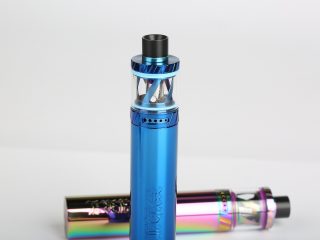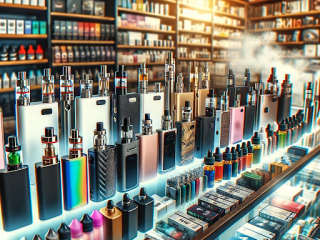Social smokers are individuals who typically consume cigarettes only in specific social situations—such as at parties, during nights out, or when among friends who smoke.
Unlike regular smokers, they do not feel compelled to smoke daily. Their behaviour is often driven by psychological triggers like peer influence, stress, or social bonding rituals. According to social identity theory, many social smokers view smoking as a means to assimilate with a group or to enhance interpersonal connection.
Prevalence Among Non-Regular Smokers
Recent studies in the UK and across Europe indicate a rising trend in occasional smoking, especially among young adults aged 18–30. These individuals often don’t identify as smokers, despite consuming tobacco products periodically. The NHS (National Health Service) and Public Health England have flagged this demographic as particularly challenging for public health messaging due to their underestimation of the health risks associated with even light smoking, such as exposure to tar and carbon monoxide.
Health Perceptions Among Social Smokers
Many social smokers wrongly perceive their habit as harmless due to its infrequency. However, evidence suggests even occasional smoking can significantly increase the risk of cardiovascular disease and respiratory issues. These misconceptions hinder efforts by organisations like Cancer Research UK, which advocate for smoking cessation tools and harm-reduction strategies.
One approach includes promoting regulated alternatives, such as the Hayati Pro Ultra from Ordervape, which offers adult users a controlled and smoke-free option aligned with UK compliance standards.
What is Non-Nicotine Vaping?
Components of Nicotine-Free Vape Products
Non-nicotine vape products contain a base of propylene glycol (PG) and vegetable glycerin (VG), flavouring agents, and occasionally additives like CBD or vitamins. These products replicate the sensory experience of smoking—flavour, throat hit, and vapour—without the addictive chemical nicotine. The absence of nicotine also eliminates concerns around dependency, which is a major public health goal.
Forms and Formats: Disposables vs Refillables
Nicotine-free vapes are available in multiple formats: disposable vape pens, refillable pod systems, and advanced box mods. Disposables are often favoured in social settings for their ease of use, variety of flavours, and portability. Products like the Hayati Rubik 7K cater to users seeking a cost-effective way to enjoy multiple flavour options with & without nicotine, making them popular for casual or social use. Refillable devices offer users greater control over vapour production and PG/VG ratios.
Regulatory Context in the UK for Non-Nicotine Vapes
While nicotine-containing vape products are regulated under the Tobacco and Related Products Regulations (TRPR) and overseen by the MHRA (Medicines and Healthcare products Regulatory Agency), nicotine-free devices currently face less scrutiny. However, Public Health England and the WHO have advocated for broader regulation to ensure product safety, quality control, and marketing ethics.
Motivations Behind Vaping Without Nicotine
Mimicking Smoking Rituals Without the Addiction
For non-smokers or ex-smokers, vaping without nicotine allows them to partake in social rituals—holding a device, exhaling vapour, and experiencing flavours—without the risk of developing nicotine dependency. This satisfies behavioural aspects like oral fixation and hand-to-mouth motion, common in both vaping and social smoking.
Flavour Exploration as a Lifestyle Element
Flavours play a central role in the appeal of nicotine-free vapes. From dessert profiles to exotic fruits, the variety turns vaping into a sensory experience and lifestyle choice. Users who dislike the harshness of tobacco or the throat hit associated with nicotine often find vaping more palatable and enjoyable.
Managing Oral Fixation and Stress in Social Settings
Many users cite stress relief and social comfort as reasons for choosing nicotine-free vapes during group interactions. The behaviour becomes a coping mechanism, fulfilling the same social triggers for smoking but without exposing the user to harmful substances like tar or nicotine.
Psychological and Social Dynamics of Switching to Vapes
Social Acceptability of Vaping vs Smoking in Public
Vaping, particularly without nicotine, is generally seen as more socially acceptable than smoking. There are fewer offensive odours, no second-hand smoke, and lower public resistance, especially in semi-public spaces. This aligns with evolving public health goals aimed at reducing the social visibility of smoking.
Role of Social Influence and Group Norms
Group dynamics heavily influence the adoption of vaping. Social cues and peer acceptance shape individual behaviour, particularly in youth and young adults. When vaping is integrated into group norms, it often becomes a socially reinforced habit, even for non-smokers.
Digital Identity: Vaping in Pop Culture and Social Media
Vaping has found its way into pop culture and digital identity, often promoted on platforms like Instagram and TikTok. Influencers and celebrities showcase vaping as part of a broader lifestyle narrative. This visibility plays a powerful role in normalising vape use, especially among demographics vulnerable to social pressure.
Comparative Health Risks: Vaping vs Social Smoking
Combustion vs Vapour: Toxicological Differences
Combustible tobacco releases thousands of harmful chemicals, including tar and carbon monoxide. Vaping, particularly when nicotine-free, eliminates the combustion process, thereby reducing exposure to these toxic compounds. While not risk-free, it is considered a harm-reduction alternative by organisations like Cancer Research UK.
Absence of Nicotine: What Does It Really Mean?
Nicotine-free vaping removes the primary addictive component of cigarettes. This significantly reduces dependency risk. However, flavouring agents and other aerosolised chemicals in e-liquids still pose potential risks, and their long-term effects are not yet fully understood.
Long-Term Unknowns: What Does Current Research Say?
The NHS and WHO both emphasise the need for longitudinal research into the long-term effects of vaping, even without nicotine. Potential risks include respiratory irritation, hypersensitivity to flavouring compounds, and behavioural addiction from habitual use. Nonetheless, early data suggests it’s a safer alternative to traditional smoking.
Can Vaping Fully Replace Social Smoking for Non-Nicotine Users?
Substitution Patterns and Habit Formation
Some users successfully switch from social smoking to non-nicotine vaping as a behavioural substitute. This transition is often influenced by social environment, availability of flavours, and perceived safety. Vaping becomes an alternative ritual that fulfils the same social cues.
Is Vaping a Crutch or a Healthier Transition Tool?
Public health narratives frame non-nicotine vaping as a harm-reduction tool rather than a health product. It offers a middle ground—allowing users to disengage from harmful smoking habits while avoiding nicotine. However, concerns around forming new inhalation habits remain.
Ethical and Public Health Considerations
Normalisation of Vaping Among Non-Smokers
There’s growing concern that normalising nicotine-free vaping could inadvertently encourage non-smokers—particularly youth—to start inhaling substances. Public Health England urges responsible marketing to ensure that vaping does not become an initiation behaviour.
Gateway Concerns: From Vaping to Smoking or Vice Versa
The gateway theory remains controversial. Some evidence suggests that young people who start with non-nicotine vaping are more likely to try cigarettes later. This potential trend underscores the importance of education and prevention strategies aimed at youth and non-users.
Marketing Ethics and Product Positioning
Vape brands must take care to market ethically—avoiding appeals to minors, omitting misleading health claims, and ensuring transparent labelling. As regulations evolve, the MHRA is expected to play a larger role in overseeing the advertising and product placement of non-nicotine vapes.
Conclusion
Non-nicotine vaping can, in many cases, replace social smoking as a less harmful alternative. It offers a similar social experience without the addictive properties of nicotine or the toxic by-products of combustion. However, it is essential to maintain clear public health messaging: while less harmful, vaping is not entirely benign. Responsible use, ethical marketing, and further research are crucial to ensuring its role as a positive substitute.












